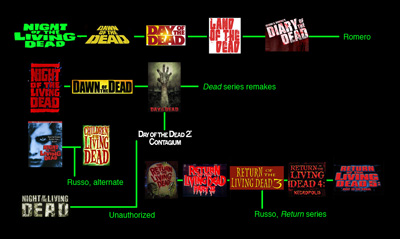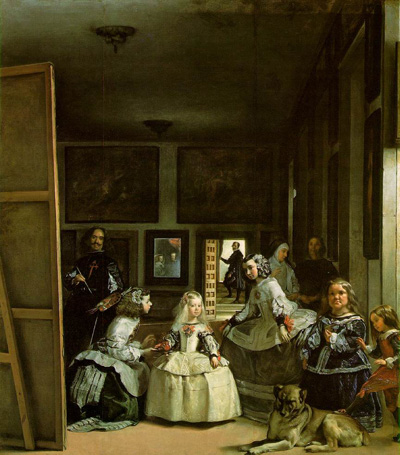The biophony of Trout Lake
I spent the long Memorial Day weekend with high school pals, fathers, and siblings on a fishing trip in northwestern Ontario. (You may recall the write-up from a few years back featuring Bruce the ax-wielding moose-hunter.)
We’ve been making the trip for decades, but it was only this time that I realized the full impact of truly being off the grid: no roads, no landlines, no cell service, obviously no computers, no Internet. It was a fantastic shock to the system.
The disconnection is not abrupt. You fly into Winnipeg and all is well. Cell still works; iPhone happily sucking in data. You drive east out of Manitoba into Ontario, all good, happy banter in the car, people still covertly checking devices for refresh. Once past Vermillion Bay things start to get dodgy, connection in and out, sucking a shrinking air pocket inside a sinking vehicle. Then Red Lake. Nothing but landlines. Connectivity here is only for the old school essentials such as calling home to loved ones. You wonder, maybe this is the only connection that matters.
The next day you take the float plane to Trout Lake. The last moment of connectivity departs in a cataclysm of noise as the 1940’s era prop aircraft motors up to speed. You put on old school noise-cancelling headsets (i.e., huge rubber and foam cans) and the world goes silent. When you’re finally on the dock in Trout Lake you may as well still have the headset on because everything is utterly still, cloyingly quiet.
You better like the people you with because you can’t tweet your discontent. Of course, liking the people you’re with — and the staff at the camp — is the reason for the trip. But the importance of human communication rather hits you in the face.
And not just verbal communication. Most of the guides on the lake are native Canadians, Indians in the old parlance of the US. Famously taciturn, these guides know the lake like you knew your childhood neighborhood — but they’re not conversationalists. Most respond in grunts or curt phrases. Some open up occasionally (if, sadly, the chance of alcohol is involved) but even then it is awkward and quick to dissolve. As such, the communication throughput becomes even narrower. But the signal-to-noise ratio is off the charts.* From wideband always-on to hand gestures and body language in 24 hours.
So you’re left to listen. And that’s when it hits you. This place is loud. Lapping waves, birdcalls that can only be described as symphonic, overlapping frog croaks, the last floes of ice in the crunching throes of dissolution, indeterminate animal noises that frighten, even the low white noise of the biomass on the shore recycling itself.**
It’s an internet. Which is to say, it is a massively-scaled, multiply-threaded system of signals with intention. The birds aren’t chirping because its pretty; they’re communicating. The ice isn’t making noise with purpose but it serves a purpose. Moose and other shallows-dwelling animals hear it and adjust behavior.
But there is human-made noise, of course, all gas-powered. Float planes every few days, outboard motors every few minutes, and the camp generator way back in the woods always. It’s an ecological disruption, if only aural. Not nearly the damage we’re causing to the environment in other ways, but damage just the same.
Bernie Krause calls nature’s soundscape biophony and contrasts it with human-made noise, anthrophony. He’s a field-recording scientist who catalogs the ways in which man’s din interferes with the communication networks built in to nature, inanimate and living. It’s no different than spectrum interference between your router and cordless phone. Two signals with the same acoustic imprint are going to degrade each other.
The real reason the soundscape on the lake is an internet is because it works around outages; it isn’t point-to-point. When a motorboat storms through a bay certain communications are disrupted, to be sure. But the toad croak network continues with shorter hops (so to speak) between rebroadcast. Eagles depart for quieter aeries from which to communicate. And of course most signals are simply queued for later transmission. It’s remarkably effective … to a point. When the noise is constant (as in the generator) the soundscape alters the landscape firmly, pushing the communication past a certain radius where it all works again.
It’s only in a place as serene as Trout Lake that you realize all this, of course. Laws requiring sound abatement mostly exist only in dense urban areas whose ambient noise level is already ridiculously high. Exurbia and rural areas — the places with the most at stake — hardly give human-made noise a second thought.
(It’s interesting to contrast this experience with the other annual fishing trip I take with my family on the Gulf in Texas. There, in a boat even miles out fishing the intercoastal waters, you’re always in range of a cell tower. Guides follow the fish by talking to each other on phones constantly. You wonder what the fishing would be like if the guides had to jack into nature’s network rather than Verizon’s.)
Back on Trout Lake, you return to camp after a day fishing for a congenial bullshitting happy hour, just talking at a table face-to-face. Dinner preparation is announced with one bell ringing, serving by two. The night unwinds by a fire where you watch the aurora screensaver in the sky and, mostly, just listen to nature’s nocturnal packet switching hit overdrive.
More photos and video here.
* High signal-to-noise is the very reason for no roads in. If you open up that bandwidth the pressure on the lake ecology increases exponentially, reducing the high value signals: huge, abundant fish.
** Some of the dads are hard of hearing and use in-ear aids. The near-absence of human noise and direct soundlines on the lake surface allow them to hear sounds far better (such as from boat to boat hundreds of yards apart) than they can even do in a small room around a table.
Lessons from Zombiefest, Part the First
Gather ’round, members of the living. You are about to become educated on the finer points of the undead film genre.
A while back my brother and I watched every film begotten (and misbegotten) from Romero’s classic Night of the Living Dead — 16, plus one trailer.
That’s right. We’ve done the hard work so you don’t have to.
Zombie films almost always contrast human incompetence, ignorance, or incompatibility with the external threat of the revenant hordes. Which is to say, humans nearly always screw themselves worse than the zombies do. Zombies are not stalkers or serial killers. They frighten because they are single-minded and unstoppable — unstoppable because of quantity rather than invulnerability. Like a virus. In fact, substitute viruses for the undead and you basically have the same movie.
Even so, fear of the undead usually stands for something else. It’s always the fear of others, a group that shifts with mainstream society’s notion of norms. So, for instance, it has been argued that Night of the Living Dead‘s zombies represent drug-addled hippies, out of their minds and focused on getting their fix. It was 1968, after all. That symbolism is debatable — and it gets a lot more complex, though no less true, when the zombies become somewhat sympathetic in later films — but it is clear that Romero at least always tries to depict the pitched battle of humans vs. undead as something more than just that.
A note for the true fan, there are spoilers below because, well, all zombies spoil eventually. Also, some of the clips are gory, duh.
We watched the films based on release date, but they are here grouped according to main series and remakes.
Lastly, please forgive the stylistic schizophrenia of the write-ups. That’s what you get when you mix a collaborative spreadsheet and several personal kegs of beer over a weekend of sedentary film-viewing.
Romero Series:
Night of the Living Dead (1968)
The granddaddy, near perfect. Black-and-white. Zombies are not slow, mindless or lumbering. They are the living recently-dead, not rotting corpses. Some even use tools to kill. (Joey: “That may be the most un-zombielike thing I have ever seen.”) No crawling out of the grave. Some confusion about whether they can be killed in any way that a human can be or if you have to shoot them in the head (which becomes the standard later on). Seems they cannot “infect” the living. Mention of a Venus satellite coming back to Earth and starting the “epidemic”. Mr. Cooper is a dead ringer for Rob Corddry. Odd fixation on taxidermy. Little girl zombie confronting her parents as disturbing now as it surely must have been in 1968. Lead character is a black man, unusual for 1968. He never gets it from the zombies but is killed in the end (mistakenly?) by a group of rescuers that looks exactly like a lynch mob. Best quote: “They’re coming to get you, Bahr-bah-rah.”
One of the reasons that Night spawned so many remakes and derivatives is that it has lapsed into the public domain. As such the entire thing is online for your viewing pleasure.
Rating: ★★★★★
Hard to argue with a movie whose setting is the locus of the real undead in America: the suburban shopping mall. This continuation is conceptually brilliant, but executed not as well as the original. Possibly influenced by Network (released two years earlier), the film starts in a TV edit suite broadcasting news of the sprawling zombie epidemic. (Interesting flipside to the always-on TV in the first film, basically a character unto itself. At one point in Night someone justifies his actions by saying “Well, the television told us to.”) Action shifts to a mall where a small band of survivors takes refuge from the madding crowd, a consumerist utopia vs. unstructured lust (the urban street, natch). The agent of zombification is now officially viral. The voice of reason, again, is a black man. Firsts: Tom Savini (make-up effects auteur) cameos as a biker; disembowelment; helicopter scalping; obese zombie (rare!). Also, entire biker gang is drinking High Life, which in itself merits applause.
Here’s Savini fending off the shoppers, er, zombies and coming to his own end.
Rating: ★★★☆☆
An undead movie with a message. That sucks. Or rather, doesn’t live up to the Romero standard, which disappoints all the more. (For true suckage, we must wait for a few remakes, coming in future post installaments.) So, the outbreak is basically worldwide, lots of shots of overrun cities. A group of scientists and military folk hole up in a vast underground bunker. The scientists are running experiments on captured, shackled zombies because, you see, even zombies have feelings. Bud, the only zombie in any Romero flick that speaks a line, is the central figure. Behind him is this weird three cross motif on the wall. What is he, the messiah? The whole thing is paced through rubber cement, e.g. the first kill (of a zombie, no less) is 58 minutes into the film. The brainy scientists vs. brawny military disagreements tire after, oh, the first one. In the end, it’s too much preach, not enough gore. One of the sensitive humans says “How can we set an example for them if we act like barbarians ourselves?” Gag.
Here’s an unchained Bub actually shooting (and saluting) the head military guy, who is then gang-dismembered.
Rating: ★☆☆☆☆
Twenty years separate this from Day and thank god for that. This is a great movie. The world is completely overrun with the undead. Uninfected humans are barricaded in walled urban centers (hello Baghdad Green Zone!); there’s something of a comfortable equilibrium. Frequent sorties for supplies are undertaken outside the city in a heavily-armored truck-tank that can mow down zombies and distract them with fireworks (“sky flowers”). The twist is that the undead are beginning to remember things, are getting smarter, acting braver. Oh, also they learn to swim. There’s a bit of a zombies-are-people-too vibe which annoys and I’m no great fan of zombies seeking revenge (meaning they are compelled by more than just a hunger for flesh, boo), but overall this is one great flick. Dennis Hopper and John Leguizamo are fantastic.
Here’s the original, unreleased trailer that integrates some footage from the first three movies, plus the creepy quote from Night.
Rating: ★★★★☆
Stay tuned for the next riveting installment of the undead marathon recap. And for god’s sake aim for the head.
Are you smarter than a student in 1924?
My wife and I owned a home at 60 Park Circle in Atlanta for a grand total of 14 months in the late 90’s. It was an eighty-year-old, single story affair that was actually on the National Register for Historic Places, though we never exactly figured out why.

The house had a partial basement and an extremely creepy, dank, dirt-floored crawlspace. I slithered into this space almost as soon as we took ownership. Towards the back was an old trunk. When I pried the trunk open it was sorta like when Belloq opened the Ark in Raiders with the hiss and the smoke seeping out. Except my face did not melt off.
The top of the trunk was composed of several strata of yellowed newspaper clippings, mostly about the 1924 presidential election. “Keep Cool with Coolidge!”
But the majority of the trunk was full of books, the text books of one W. A. (William) Strange, student at Emory University, resident of 306 Winship Hall.
I didn’t do anything with the books at the time. When we moved to Chicago I just loaded the trunk into the moving van. Well, two moves and nine years later I’ve delved back in.
There are 19 books in all, hardcover, musty, but in remarkably good shape. A snapshot of Mr. Strange’s courseload via the titles shows Spanish, Accounting, Psychology, Biology, Chemistry, Latin, and American History. The scribbled marginalia in the books is almost completely homework-related. Alas, there’s no musing on flappers, Prohibition, Rhapsody in Blue, the founding of IBM, the Beer Hall Putsch, the Geneva Protocol, or the first Macy’s Thanksgiving Day parade.
But the history book did contain a sheet of looseleaf paper, a quiz which earned Mr. Strange a C. (He only got three wrong answers, but such was the grading.) It is an interesting little document, not at all what you’d except to find in an American History class nowadays. Of course it’s only a sliver of a presumably much wider syllabus, but the questions seem decidedly regional. The phrasing of many of the questions makes it abundantly clear that there’s no such thing as a completely neutral view of history.

So, what happened to you Mr. Strange? And how did your books end up in that crawlspace?
Recursion
I am dying to write in-depth about the Forbidden City virtual world project I’ve been helming for the last few years. Alas, that must wait for the launch itself.* But. We can talk about it obliquely, no?
There’s a scene** in the Virtual Forbidden City in which a painter sits in a garden with the imperial family, painting away. It’s a simple thing, really, but I find it immensely thought-provoking. As a visitor you’re an unseen spectator of the painted depiction of a moment in a world which is itself the depiction of a moment of daily life in a virtual milieu. A snapshot (which your avatar can take) would reveal a recursive scene-within-a-scene or, in the lingo of the art world, a mise en abyme — a technique used for centuries in all manner of paintings, woodcuts, and tapestries.
This got me wondering if there is any historical analog to the depiction of artists themselves inside the frame of the same scene they are painting. Cursory searching and lazytweeting yielded no actual term for such a composition, but in fact there are precedents.
Maybe the most famous is Las Meninas by Diego Velázquez. The work shows the painter (on the left holding a brush, duh) but also situates the viewer (that’d be you) as the object of his gaze. In other words, just looking at the painting you’re role-playing royalty.
Even more interesting is the mirror in the back of the room which reflects the royal couple (the true subjects of the painting-within-a-painting) — or which may simply reflect the canvas itself. In either case the viewer, while unseen, is a participant in the space.
So there it is folks. Diego Velázquez pretty much nailed the lure of virtual worlds in a painting 352 years ago.
- Transcend viewing; embrace participation. (Even if, in this case, it is implied.)
- Fictionalize the first-person. (Nerdspeak: permit the possibility of role-playing.)
- Engage the viewer/participant by telling stories mid-story. (What the hell is that guy doing in the doorway? And why is that kid’s foot on the dog? And, the midgets?)
Scrolling forward a few centuries we have Mark Tansey, an artist smitten with the contrast between the static moment and the dynamic (lengthy) process of painting itself. Tansey’s Action Painting I and II place the artist in a position that only a photographer could capture, depicting a moment of catastrophic energy as if it were just another still life of fruit.
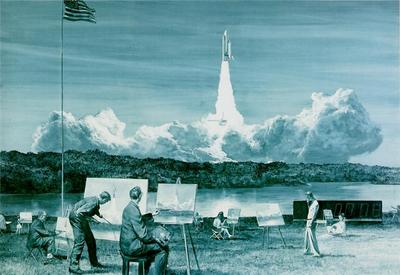
Mark Tansey, Action Painting II
See also the first Action Painting.
In the Virtual Forbidden City the painting scene is, essentially, a still life of the imperial family, but the fact that your viewing position is unlimited — you can walk around it, into it, or stick your nose right down onto the painting — speaks to both Velázquez’s and Tansey’s focus on the observer rather than the observed. This, to me, is the promise of virtual worlds. And something I hope we at least approach, if not achieve, with the VFC.
Of course the piece-de-resistance (artspeak, yes!) in this vein has got to be Robbie Dingo’s unbelievable recreation of Van Gogh’s Starry Night. I remember when we were building the prototype of the VFC in Second Life. SL, like many virtual worlds, is built from within, by avatars, moving primitive shapes like sorcerers. It was a striking scene being inside the world watching as walls were moved around, tweaked, textured and placed. Truly living inside the process of a painting.
If you’ve not seen Dingo’s video, do yourself this favor.
Phew, I made it. That was oblique enough, yes?
* And it must wait even a bit longer now. Eagle-eyed viewers of the site may have noticed I slyly changed the date of the project launch in the sidebar from “spring” until “fall” of this year, rounding out my involvement at a cool 4.5 years. Egads that’s a long time to work on a project.
* * Scenes in the VFC are basically looping historical tableaux that a visitor can approach on the grounds of the palace. Distinct from an activity which permits interaction.
Get ready for a little jolt, fellas.
As the Space Shuttle program goes, so goes Ascent Stage. It’s time for a fundamental redesign.
The backend’s been upgraded to MT 4.1 and good things are in store for the user experience too.
I shall endeavor to redo the website for less than the US $1B pledged to make pretty new American rockets. But only slightly less.
Sorry for any bumpiness.
Sleestak
My earliest memory of television is also my scariest. I was born in 1972. Land of the Lost aired on Saturday mornings from 1974 to 1976. It was a remarkable program for the time — dark for its time slot, ambitious effects, multi-episode story arcs — I’ve later learned. But back then I knew only this: the Sleestak scared me to death.
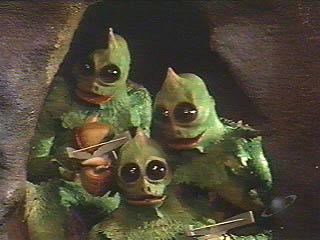
A Sleestak is a cave-dwelling humanoid lizardish creature forever threatening the three hapless humans on the show. Peeling back a few layers of psychological scar tissue I seem to recall that they only ever hissed, though I may simply be unable to remember anything else. (Tell me you wouldn’t crap yourself as a four-year-old hearing that. What were my parents thinking letting me watch this show?)
It’s funny how deeply fear etches. Thinking back on this traumatic formative period of my life I also recall a restaurant my parents used to take us to. I remember two things. First it was like 100 miles away (Oak Brook to Naperville for you Chicago area folks) and second that a Sleestak lived there.
It was a dark restaurant, themed like a old west mining operation. Lots of antique excavation and railway equipment decorating the walls. On a shelf in the corner was an old railroad signal lantern. It looked something like this.
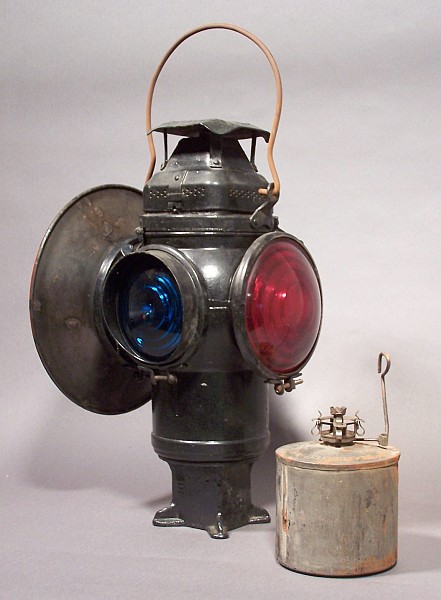
Obviously, obviously, I could look at nothing else. In the cave-like dark this thing looked exactly like the bulbous eyes of a Sleestak peering down on me and my roast beef au jus. In fact I can’t eat a beef dip to this day without hearing a creepy hissing in my head.
Apparently there is a movie adaptation in the works. Have to take my kids to that. Nothing says family bonding like shared childhood terror.

